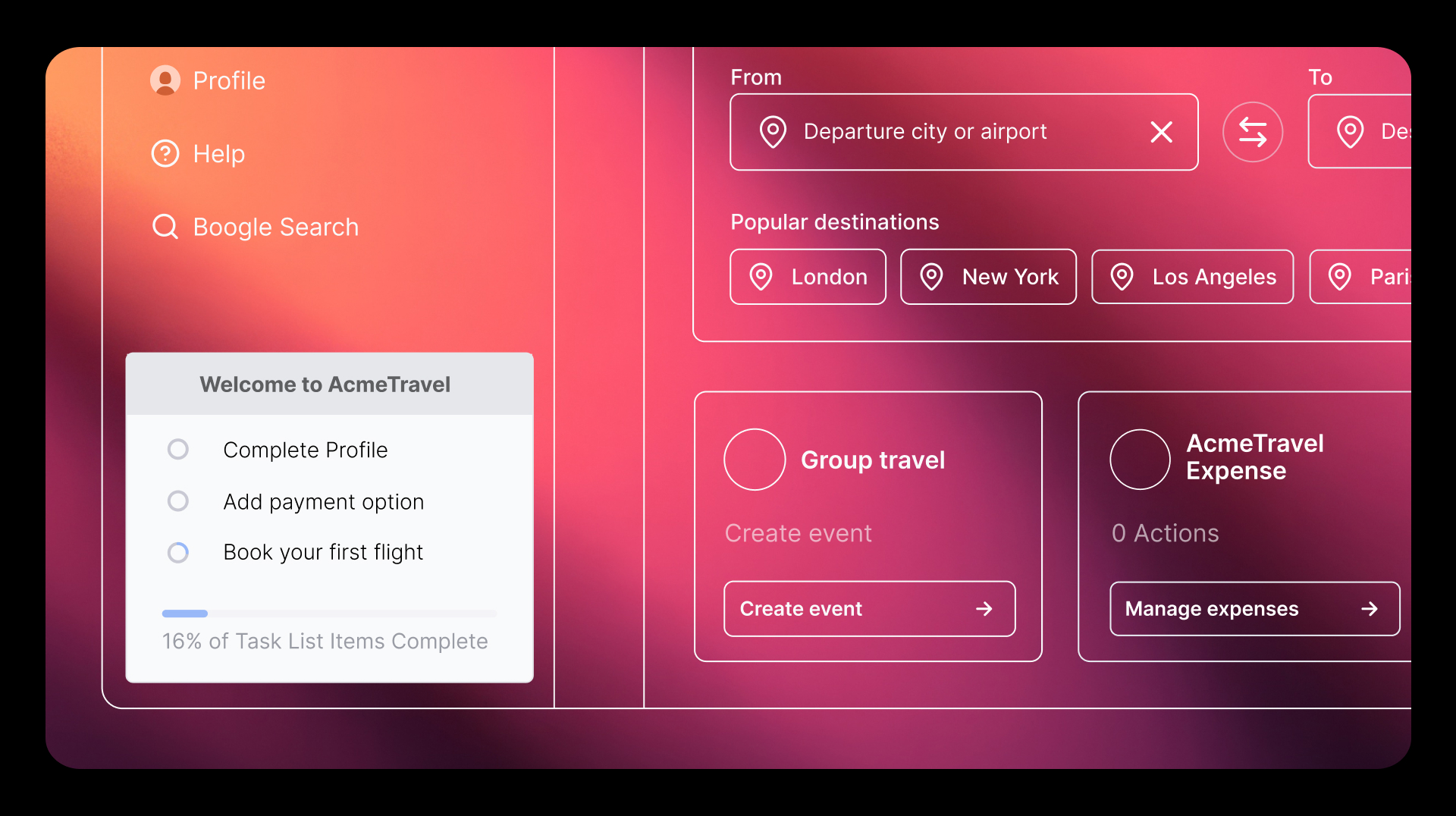Data dashboards are a standard mechanism for reporting on key metrics and driving business decisions. For product teams in particular, product analytics dashboards fuel product iteration and innovation, and help connect product development efforts to positive outcomes like retention, growth, and revenue generation.
But not all dashboards are created equal. At Pendo, we believe effective product analytics dashboards share three key characteristics:
-
- They centralize data so every team has access to (and can align on) up-to-date, relevant data in a single place
- They contextualize data so team members can share context to give data meaning, helping to turn data into insights and insights into action
- They enable collaboration with data through capabilities like sharing and co-editing
Our product team has been hard at work building these elements into the Pendo Dashboard experience. In a recent webinar, we brought together three experts—Stephanie Tanzar, senior director of product management at Pendo, Chad Parker, manager, product ownership at Global Payments Integrated, and Dave Shay, director of product adoption at Foreground—to talk about all things dashboards.
Read on for their best advice on how to get the most out of your Pendo Dashboards, or scroll to the bottom of the page to watch the full recording.
Use dashboards to combine quantitative and qualitative data
Product managers (PMs) have historically relied on gut feel or anecdotal evidence to drive decision making. Now, with the availability (and ease) of product analytics, they can move to more data-driven practices. But as Stephanie pointed out at the beginning of the discussion, it’s important to combine quantitative data (e.g. product usage) with qualitative data—like customer feedback or the results from a user survey. It’s helpful to think of this qualitative data as answering the why behind quantitative product usage data.
Luckily, Pendo Dashboards can help you pair these two types of data together. In addition to building a dashboard with data on feature adoption, stickiness, or Product Engagement Score, you can also add widgets for things like Net Promoter Score (NPS), in-app poll responses, or a text block with context from a recent customer call. Having all of this information in one place enables teams to better balance quantitative and qualitative data, and also helps tell a more complete picture of how users are experiencing the product.
Continuously iterate to make dashboards more useful
One of the benefits of creating dashboards in Pendo is the ability to easily share them with stakeholders across your organization. This means it’s important to make sure other people can understand and use your dashboards effectively—and do so on an ongoing basis.
As a self-proclaimed “informer” at Foreground (meaning it’s his job to provide data and tell the story around it), Dave suggested a useful workflow to follow. He uses the questions team members ask him as a signal that he might need to add data to the dashboard that answers their question. This, combined with asking for feedback on dashboards directly, helps ensure his dashboards best reflect data that is useful to the rest of his team and company. Chad also emphasized the usefulness of text blocks, saying that he uses them to provide context to data and having these robust dashboards helps get other people at Global Payments excited about Pendo.
Create a dashboard for a specific project or initiative
In addition to creating general dashboards for products as a whole, it’s beneficial to build dashboards for individual projects or initiatives. Chad shared two examples of this in practice at Global Payments. In the first case, he and his team have been working to consolidate multiple products into one new portal for their customers. They built a dashboard in Pendo to curate real-time data for features they were considering moving over to the new platform. The product team then used the dashboard to see how features were being used (if at all) and better determine which features should exist in the new portal.
The second example Chad shared centered around a specific action users often take in the platform: exporting reports. He and his team wanted to know how users were exporting their reports, with the expectation that they were exporting to Excel. After creating a dashboard in Pendo, they found that 80% of the time, users were exporting reports to PDFs—and they wanted to know why. They ran an in-app poll and housed the results in that same dashboard, and also used a text widget to provide a summary of the results. With all of this data in one place, Chad and his team were able to easily understand how users were engaging with this area of the product and the why behind their actions, helping to inform future development work.
Make your dashboards as robust as possible
While we don’t recommend packing your Pendo Dashboards with every single widget, it’s important to include all of the data that’s necessary to tell the whole story of the topic or feature at hand. Dave also reminded us that dashboards are still valuable even if you don’t have every piece of the puzzle reflected. This is when it’s useful to link out to other resources from your dashboard, for example a spreadsheet, Qualtrics report, or recording of a user research session.
Looking to dive deeper into the power of a good product analytics dashboard? Watch the full recording of Stephanie, Chad, and Dave’s conversation below.
Ready to build your own Pendo Dashboard? Follow the steps in this in-app walkthrough. If you are in the EU instance, you can access the walkthrough here.


